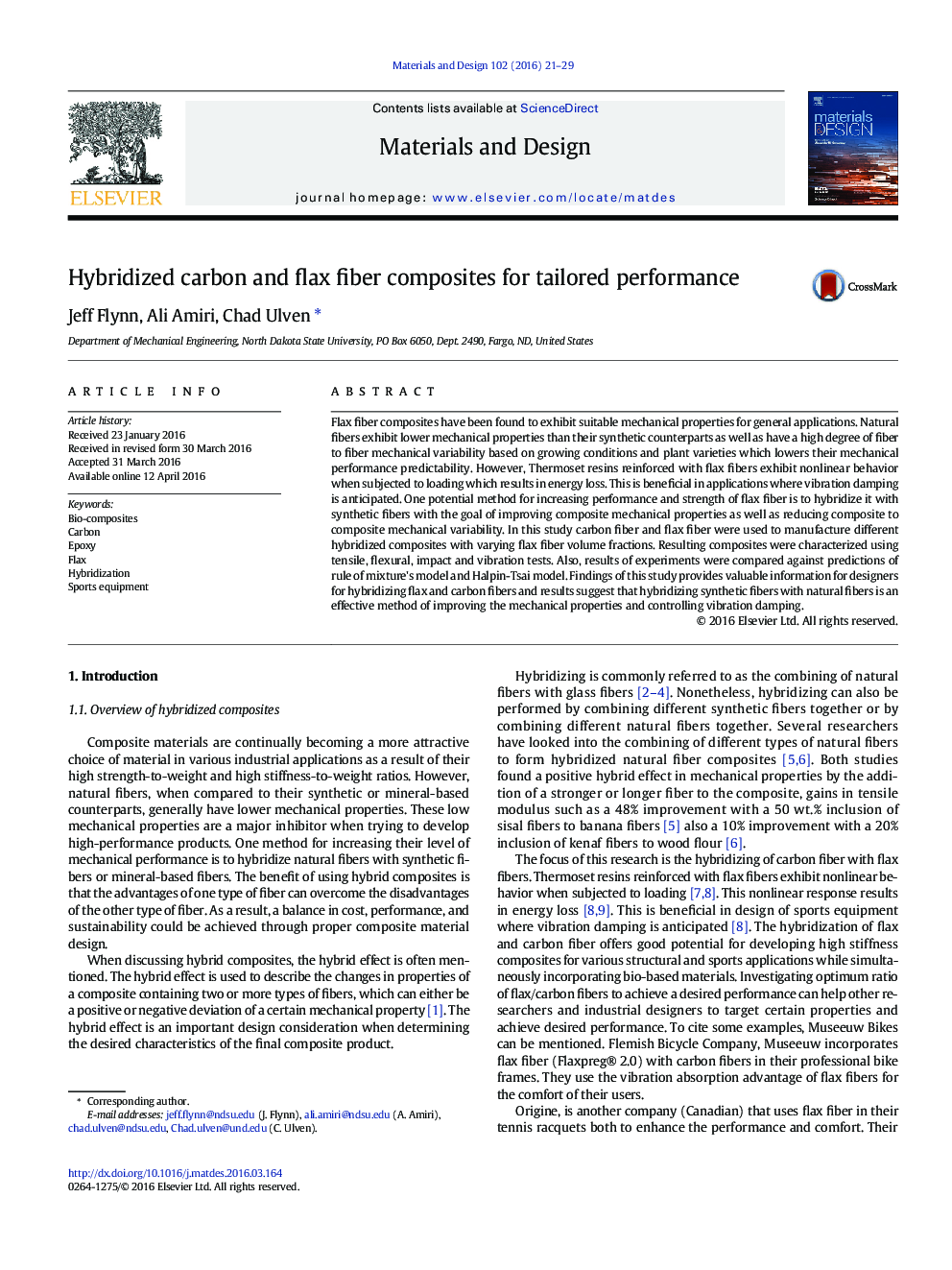| Article ID | Journal | Published Year | Pages | File Type |
|---|---|---|---|---|
| 827967 | Materials & Design | 2016 | 9 Pages |
•Valuable information is provided for designers for hybridizing natural fiber composites.•Hybridizing carbon and flax fibers is an effective way to improve vibration damping.•Micromechanical models are capable of predicting hybridized composite properties.
Flax fiber composites have been found to exhibit suitable mechanical properties for general applications. Natural fibers exhibit lower mechanical properties than their synthetic counterparts as well as have a high degree of fiber to fiber mechanical variability based on growing conditions and plant varieties which lowers their mechanical performance predictability. However, Thermoset resins reinforced with flax fibers exhibit nonlinear behavior when subjected to loading which results in energy loss. This is beneficial in applications where vibration damping is anticipated. One potential method for increasing performance and strength of flax fiber is to hybridize it with synthetic fibers with the goal of improving composite mechanical properties as well as reducing composite to composite mechanical variability. In this study carbon fiber and flax fiber were used to manufacture different hybridized composites with varying flax fiber volume fractions. Resulting composites were characterized using tensile, flexural, impact and vibration tests. Also, results of experiments were compared against predictions of rule of mixture's model and Halpin-Tsai model. Findings of this study provides valuable information for designers for hybridizing flax and carbon fibers and results suggest that hybridizing synthetic fibers with natural fibers is an effective method of improving the mechanical properties and controlling vibration damping.
Graphical abstractFigure optionsDownload full-size imageDownload as PowerPoint slide
